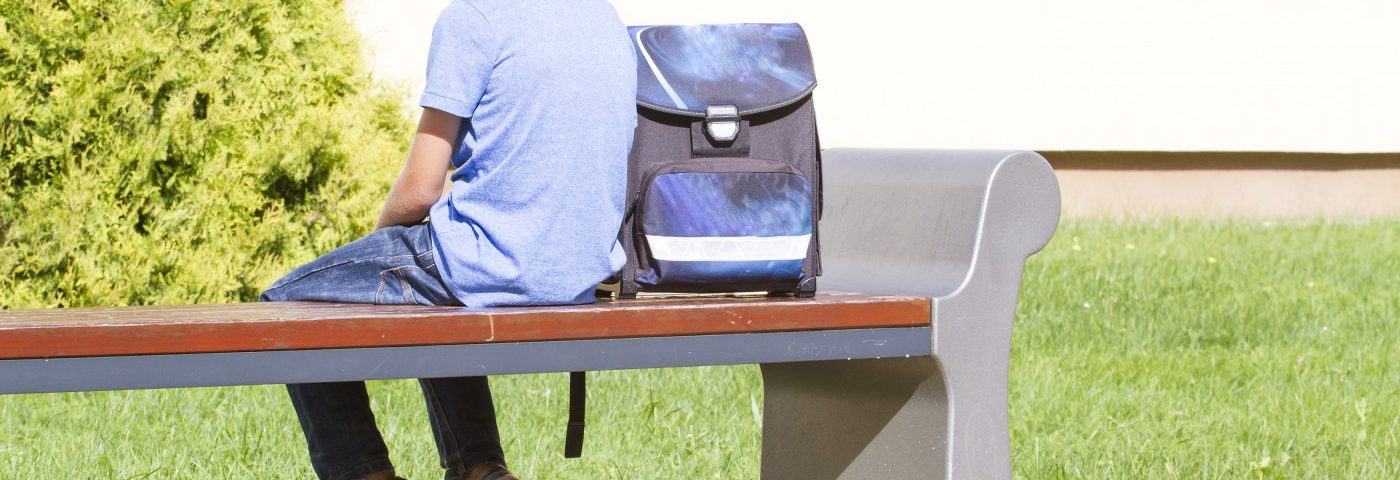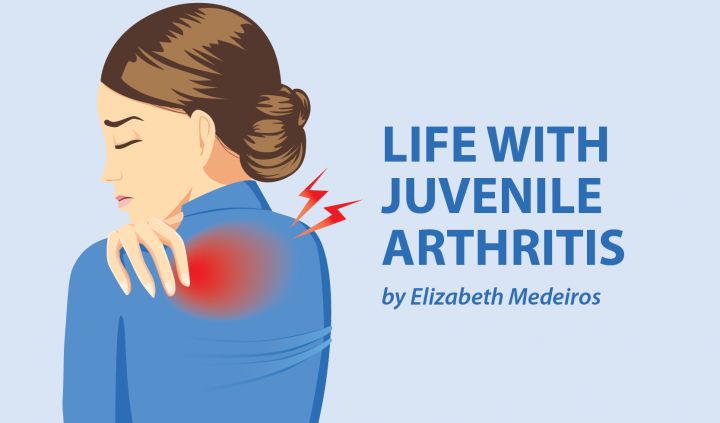There are so many moments in childhood that can cause discomfort. Wearing pinchy church shoes and being expected to sit quietly for mass can feel impossible when you’re young. Most of us were expected to carry around a ton of textbooks and sit quietly all day in school at a cold, metal desk. As uncomfortable as these moments were, they weren’t painful. Many look back fondly on these memories. But kids with juvenile arthritis may remember things differently.
Kids with JA may cringe in pain at the thought of everyday tasks. Parents don’t often think about the impact that small things may have on kids, especially if they’re items associated with daily use. By taking a walk in your child’s shoes, you might find there are so many simple ways to help them day to day. Recently, I spoke with kids with JA, and four everyday pain triggers were mentioned again and again.
Silverware
For kids with pain in the joints of their hands and wrists, cutlery can cause extreme pain. Whether it’s metal or disposal plastic, the handles tend to be small and made of hard material. It can be painful and frustrating to work with such small tools, to the point that they may be unwilling to cut their food properly or eat anything that requires utensils.
Keeping a set of cutlery on hand with plastic, rubber, or silicone handles can make mealtimes less painful for kids. These are usually easy to find. It may not be necessary every day, but it’s good to have the option. If your child buys school lunches, it may be helpful to pack them their own silverware, too. Utensil sets for small children tend to have chunky grips but are small enough to be packed up for school.
Dress shoes
You would be surprised how painful shoes can be for someone with arthritis in their feet and ankles. Even if the joints aren’t in much pain, swelling can make shoes unbearable. Since dressy occasions aren’t for every day, you may not think of how painful they can be for your child to wear.
It’s especially (but not exclusively) an issue for girls. Unfortunately, girls’ fashion shoes often aren’t comfortable. They are usually made of synthetic materials that do not allow feet to breathe or stretch to accommodate swelling. Even flat shoes can be painful if they don’t have a good, shock-absorbing base.
Rather than offer advice on the types and brands of shoes to buy, I suggest taking two pairs of shoes to any special occasion. Put on the special shoes for arrival and pictures, but allow your child to wear something more comfortable for dancing, playing, and relaxing. You might find your child will be in a better mood when their feet feel good.
Backpacks
Even after finding a well-fitting backpack, your child may still silently suffer from shoulder and back pain. No matter how well a backpack is packed, there will still be a decent amount of pressure on the spine and shoulders. Even a light load can cause intense pain when your child is in a flare.
Beyond investing in a rolling backpack, the only thing that will make it better is to lighten the load. I recommend talking with your child’s teachers to work out a plan, so they have a set of textbooks at home and in the classroom. Older kids may even be able to carry around an iPad or small laptop and use an e-textbook.
Desks
Most schools provide students with uncomfortable, metal chairs. As practical as they are for cleaning purposes, they’re not ergonomic. Children with hip or back pain may find these desks extremely uncomfortable to sit at, especially for extended lengths of time.
While I propose that we need to totally overhaul schools and give students decent chairs to sit on, there are some ways to help in the meantime. Many teachers are happy to give students with juvenile arthritis breaks to get up and walk around. In fact, some teachers may have the whole class get up to do a lap around the room! Some kids may also like to bring an extra sweater to class and fashion it into a little cushion.
Think it through
Parents, I challenge you to walk a mile in your child’s shoes. If your child suffers from back pain, put on their backpack and see how it feels. Or lie down on their mattress and see if there are lumps or indents that might be bothering them. You just might find small pain triggers they deal with every day, and simple fixes can often help a child live with a little less pain. In fact, you might even find your child’s mood improves. Just a little bit of empathy goes a long way.
***
Note: Juvenile Arthritis News is strictly a news and information website about the disease. It does not provide medical advice, diagnosis, or treatment. This content is not intended to be a substitute for professional medical advice, diagnosis, or treatment. Always seek the advice of your physician or other qualified health provider with any questions you may have regarding a medical condition. Never disregard professional medical advice or delay in seeking it because of something you have read on this website. The opinions expressed in this column are not those of Juvenile Arthritis News, or its parent company, BioNews Services, and are intended to spark discussion about issues pertaining to juvenile arthritis.


